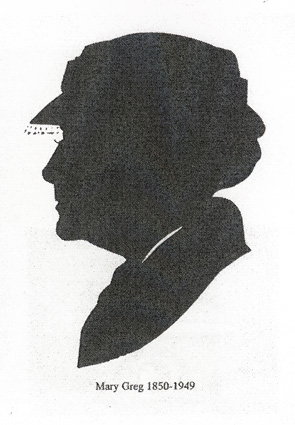Brown Bag review: Kate Hill, 30.11.11


Speaker: Kate Hill, Senior Lecturer in History, University of
Lincoln
Bygones: investigating the history of social history
collecting
Lincoln
Bygones: investigating the history of social history
collecting
This paper will investigate two moments in the early history of social history
collection and display: John Kirk's collection of tools, memorabilia and
shopfronts, which he viewed as local bygones, and over whose display he
exercised careful control at York Castle Museum in the 1930s; and Mrs Mary
Greg's collection, also referred to as 'bygones', which focused much more on
'feminine' areas such as textiles and toys. These were given to Manchester Art
Gallery, mainly in 1922. The official narrative of the development of social
history museums suggests a tendency to move away from an unscientific,
antiquarian approach, towards a more rigorous focus on the social historical
object's ability to provide systematic evidence about past life. This paper will
dispute the soundness of this trajectory, and even, in fact, its
desirability, and will suggest that the ability of social historical
objects, especially when understood as 'bygones', to invoke an intense sense
of imaginative contact with the past, has always been one of their
strengths, and should be embraced and enhanced wherever possible.
The central aim of Kate Hill's Brown Bag lecture today was to rehabilitate the collecting and display practices of Dr John Kirk (York Castle Museum) and Mrs Mary Greg (Manchester Art Gallery), often considered embarassing by contemporary critics. Both collections were formed initially in the late nineteenth century, and were incorporated into museums in the interwar period, marking them as interesting studies in the juncture between Victorian and Modernist styles of private collecting and public museum function.
Taking us through the history of the formation of both collections, Kate compared and contrasted the approaches of both Kirk and Greg with existing curatorial methods of organizing object knowledge, and concluded that for both collections, it was their affective properties which served as the primary criterion. Both were museum outsiders, but worked with museum professionals to display their collections, once donated.
In the case of Kirk's collections of obsolete items of everyday life (some very large, like shopfronts), the sense of their pastness was translated into presence, where visitors could have a sense of an atmospheric encounter with the past, contrasted with their present reality. The precise historical associations or technical functions of the objects were less important, and there was no evolutionary message of progress.
Likewise, Mary Greg believed that the past could be communicated through the material qualities of 'bygones', and collected predominantly female domestic objects for their 'heirloom' value, believing their emotive connotations to be sufficiently engaging. Greg, however, had a more overtly educational role in mind for her objects, and was particularly concerned with classses of objects that she felt were appropriate to engage working-class women and children in museums. In some ways, this makes her a pioneer in this respect, as she did not feel that the worn items of everyday were trivial, but instead were enchanting and engaging.
In terms of the curatorial preoccupations of today, the activites of both collectors are problematic; there is limited provenance for most items, as they are metonyms for a larger past, and not of an individual history. However, Kate made the point that this represents a different way of engaging with objects - on the basis of the intimacy that they can connote with the people and activities of the past - and ought to be valued as such.
The audio for Kate's session is posted on Blackboard for internal Leicester PhD students to review at their leisure. Thanks again, Kate for a really useful and thought-provoking presentation! We look forward to seeing you again in the new year for your Perspectives lecture.
Comments